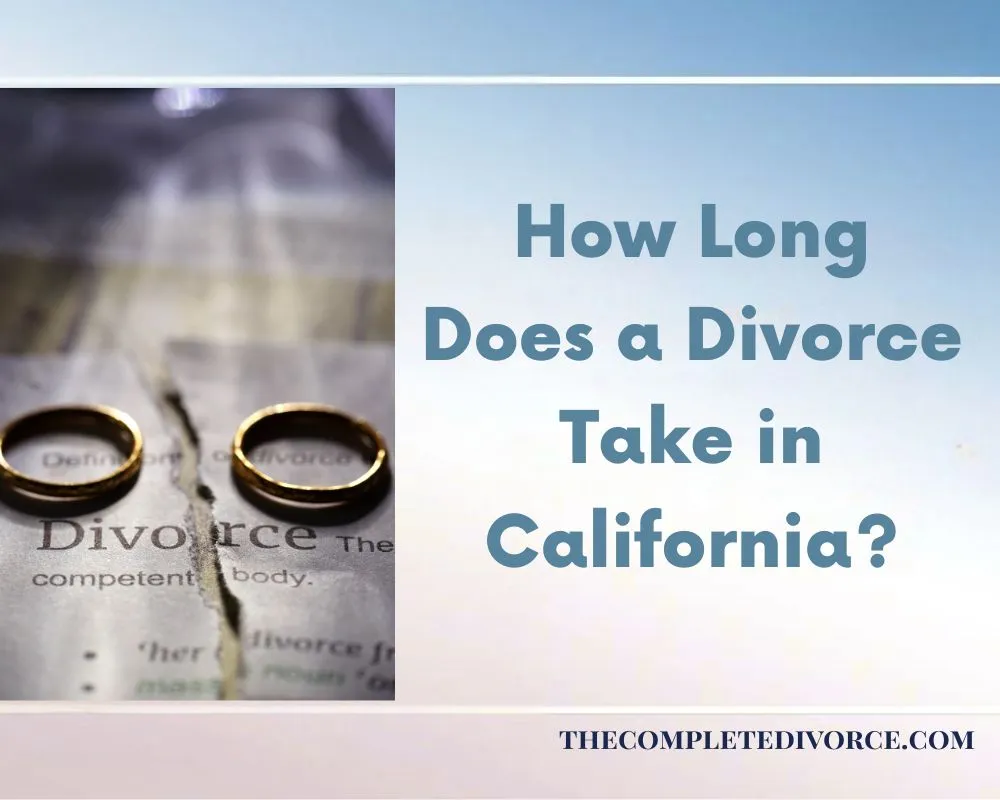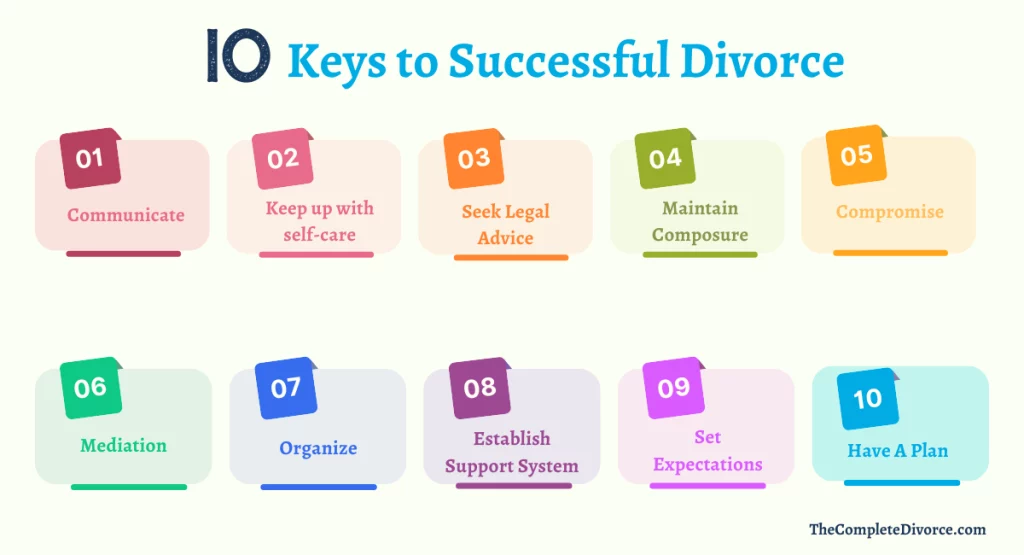
Share
Summary Dissolution in California: Complete Process

Dina Haddad
Founder & Attorney Mediator
I’m Dina Haddad, a family law attorney-mediator in California. I’m so tired of couples not having a process that’s easy to complete their divorce. They are getting lost, wasting time and money, and beyond frustrated with their results.That’s why I created TheCompleteDivorce. I took my successful mediation practice and condensed it into an affordable and winning program.
In sunny California, where dreams often take shape, marriage can sometimes hit rough patches. Like any adventure, it might lead you to unfamiliar territory. If you’re thinking about separating in California, it’s crucial to know your options. One option is called “summary dissolution California,” a simplified process designed for specific situations. In this easy-to-follow guide, we’ll explain what summary dissolution is, what you need to qualify, how much it might cost, and the step-by-step process. Think of it as your friendly guide, making this emotional journey easier to understand, almost like having a helpful California lawyer by your side.
What is Summary Dissolution?
Summary dissolution in California is like the fast lane to ending a marriage. It’s for couples with straightforward situations, offering a quicker, more cost-effective alternative to regular divorce. You both file a joint petition outlining the terms, but there are some criteria to meet: a relatively short marriage, no kids, limited assets, and an agreement on property. It’s speedier, usually taking a few months, and you can get the necessary forms online or from the court. So, if you’re looking for a simpler and quicker way to divorce, this might be it.
California Summary Dissolution Facts (2025)
- Quick Resolution: When it comes to swift resolutions, summary dissolution in California is the name of the game. Couples can often wrap up their separation relatively quickly, but it’s important to note that this process takes approximately six months from filing paperwork to the formal divorce.
- Cost-Effective: Wallets, take note! Summary dissolution in California is usually gentler on your finances compared to the standard divorce route. Expect lower filing fees and fewer legal costs. You must pay a $450 filing fee when submitting forms for summary dissolution, which is the same as the divorce filing fee.
- Limited Eligibility: Not everyone gets to ride the summary dissolution train in California. Specific criteria must be met to qualify, including strict requirements about the length of your marriage, the presence of children, and your financial health, so it’s not a one-size-fits-all solution.
- No Court Battles: Good news for those averse to courtroom drama – summary dissolution typically steers clear of contentious court appearances. It’s a smoother ride for couples looking to part ways amicably, and there are just three steps involved in a summary dissolution.
How Much Does it Cost?
In California, putting a price on the end of a marriage may seem impersonal, but it comes down to a standard $435 filing fee, no matter where you are in the state. Whether you’re in bustling Los Angeles or serene Santa Barbara, the cost remains the same. However, when it’s a joint decision, and both partners are on board from the beginning, the total filing fee is still $435. But, if one spouse is responding to the petition, they’ll also need to pay the same $435 fee to file their response. So, while it may seem like a financial transaction, it’s a reminder that divorce, even in its official paperwork, has a human and emotional side to it.
Requirements for Summary Dissolution in California
To qualify for summary dissolution in California, several key requirements must be met. These include:
- Residency Requirement: At least one of you, either you or your spouse or partner, must be a resident of California for a minimum of six months. Additionally, you must have lived in the county where you filed for divorce for at least three months.
- Mutual Agreement: Both parties involved must agree to end the marriage or partnership due to “irreconcilable differences.” This mutual consent is a fundamental aspect of summary dissolution.
- Child-Free Status: There should be no minor children from the marriage or partnership, and neither spouse can be pregnant at the time of filing.
- Short Duration: Your marriage or domestic partnership should have a relatively short duration, spanning less than five years.
- No Rental Properties: Neither you nor your spouse should rent any land or buildings, except for your current residence.
- Limited Debt: Your unpaid debts must not exceed $6,000, excluding car notes.
- Marital Asset Limit: The total worth of your marital assets, including deferred compensation and retirement assets but excluding cars, should not surpass $45,000.
- Separate Asset Limit: Neither party should possess separate assets worth more than $45,000.
- Settlement Agreement: Both parties must have signed a settlement agreement that outlines the fair division of assets and debts. This written agreement is a critical component of the summary dissolution process.
- Asset Transfer Documents: You both must have signed all necessary documents to facilitate the transfer of assets and debts as per the settlement agreement.
- No Alimony: Neither spouse should be seeking spousal support (alimony) under Cal. Fam. Code § 2400.
- Information Booklet: Both parties should have read the summary dissolution information booklet as outlined in Cal. Fam. Code § 2406.

How to File for Summary Dissolution in California
If you and your spouse are thinking about going for a summary dissolution in California, let’s break it down in an easy-to-understand way. Here’s what you need to do to prepare your summary dissolution papers:
1. Start with a Joint Petition
- Both of you need to fill out and sign a joint petition. Think of this as your official request to end your marriage or domestic partnership.
- Make sure the petition clearly says that you meet all the requirements for a summary dissolution.
- Don’t forget to provide your current mailing addresses.
- If one of you wants to change back to a previous name, make that clear in the petition and state the name you want to go back to.
2. Share Your Financial Info
You both need to share detailed information about your money, property, and expenses. This helps ensure everything gets divided fairly. There are some specific documents you’ll need to deal with:
- Declaration of Disclosure: This is where you lay out all your assets, debts, and other money stuff.
- Schedule of Assets and Debts or Property Declaration: Use this to list all the things you own and owe together.
- Tax Returns: You’ll need copies of your tax returns from the last two years to give a clear picture of your finances.
- Investment and Business Info: If either of you has investments or businesses from when you were still together, make sure to document that too.
Filling your Summary Dissolution Papers
Ensure you meet the eligibility criteria, including a short marriage, limited property and debt, no minor children, and an agreement on property and debt division.
Prepare the Summary Dissolution Forms:
Obtain and complete the required summary dissolution forms, such as FL-800, FL-810, and FL-820.
Sign the Summary Dissolution Agreement:
Both spouses must sign the Summary Dissolution Agreement (FL-810) outlining property and debt division.
Complete the Property Declaration:
Each spouse must fill out a Property Declaration (FL-820) to disclose all assets and debts acquired during the marriage.
Make Copies:
Create copies of all completed forms for your records and court filing.
File the Summary Dissolution Papers:
Take completed forms to the local family court clerk’s office and pay the filing fee unless eligible for a fee waiver. Receive a case number from the clerk after filing.
Serve the Documents:
Serve a copy of the filed documents to your spouse through personal service, mail, or another legal method.
Wait for the Waiting Period:
Observe the mandatory six-month waiting period during which finalization is not possible.
Complete the Judgment Forms:
After the waiting period, complete the Judgment forms, including FL-820 (Revised) and FL-830.
File the Judgment Forms:
Submit the completed Judgment forms to the court clerk’s office for filing.
Get Your Judgment:
After processing, receive a copy of the Final Judgment of Summary Dissolution.
Notify Creditors and Update Records:
Inform creditors and update records regarding changes in marital status, property, and debts.
How Long Does a Dissolution Take in California?
A summary dissolution does not last forever. Once you file the proper documentation with the court, your divorce is usually finalized within 6 months. That implies you can resume your life relatively fast. It’s like hastening the end of your marriage, but keep in mind that not everyone qualifies for this choice. You must meet certain standards, and both you and your partner must agree to end the marriage. So, if you’re qualified and can work together, a summary dissolution may be a more uncomplicated way to divorce in California.
Conclusion:
The process of dissolving a marriage in California, whether through summary dissolution or a traditional divorce, In conclusion, summary dissolution in California is a viable option for couples looking to end their marriage or domestic partnership quickly and cost-effectively. By understanding the requirements, costs, and procedures, you can embark on this journey with confidence, knowing that you are taking the steps necessary to move forward in your life. Remember that consulting with legal professionals can provide valuable guidance throughout this emotional process, helping you navigate the path to freedom with clarity and peace of mind. Understanding family laws in California is also essential, as they play a significant role in the dissolution process, especially when family dynamics are involved.






